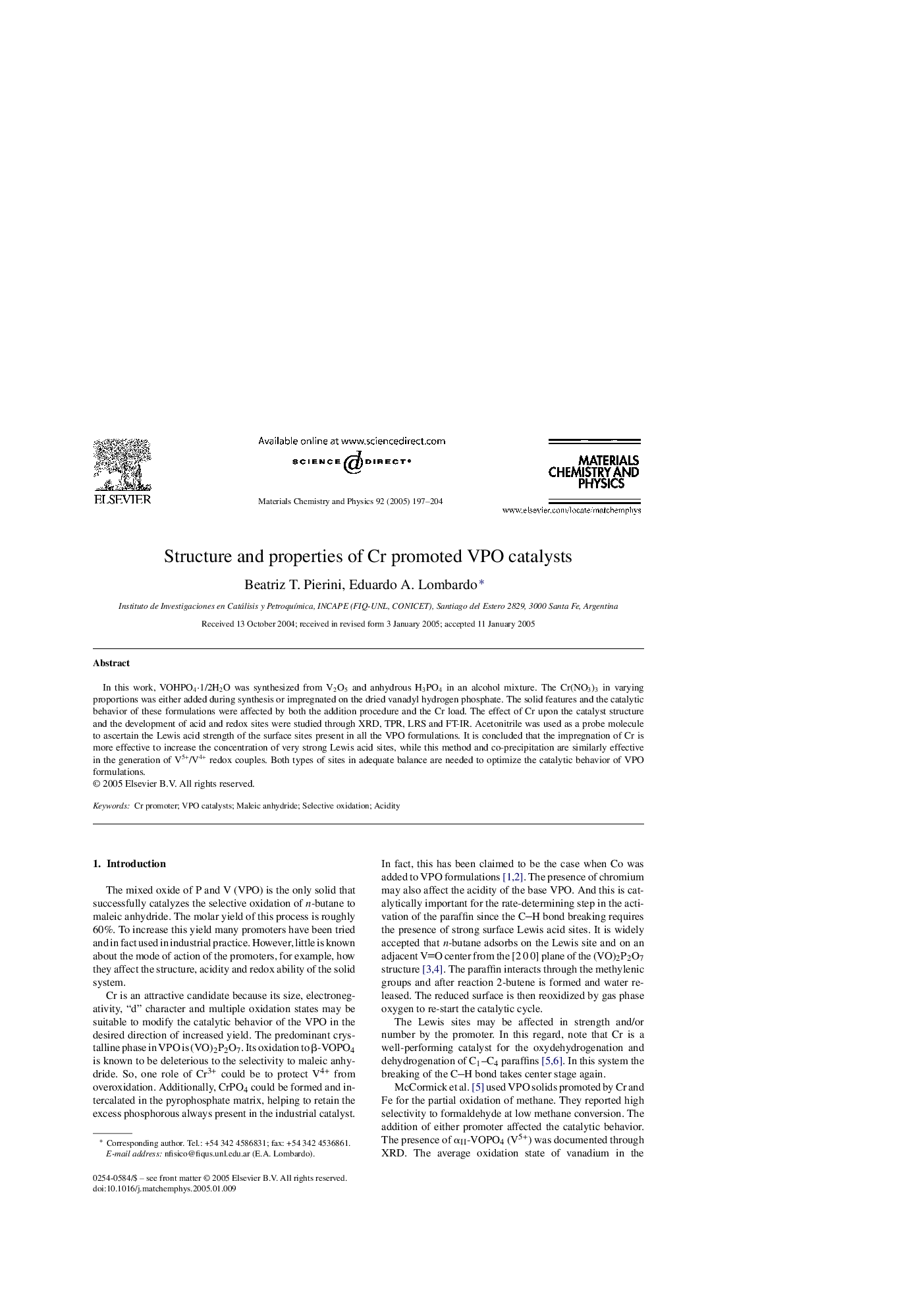| Article ID | Journal | Published Year | Pages | File Type |
|---|---|---|---|---|
| 10638231 | Materials Chemistry and Physics | 2005 | 8 Pages |
Abstract
In this work, VOHPO4·1/2H2O was synthesized from V2O5 and anhydrous H3PO4 in an alcohol mixture. The Cr(NO3)3 in varying proportions was either added during synthesis or impregnated on the dried vanadyl hydrogen phosphate. The solid features and the catalytic behavior of these formulations were affected by both the addition procedure and the Cr load. The effect of Cr upon the catalyst structure and the development of acid and redox sites were studied through XRD, TPR, LRS and FT-IR. Acetonitrile was used as a probe molecule to ascertain the Lewis acid strength of the surface sites present in all the VPO formulations. It is concluded that the impregnation of Cr is more effective to increase the concentration of very strong Lewis acid sites, while this method and co-precipitation are similarly effective in the generation of V5+/V4+ redox couples. Both types of sites in adequate balance are needed to optimize the catalytic behavior of VPO formulations.
Related Topics
Physical Sciences and Engineering
Materials Science
Electronic, Optical and Magnetic Materials
Authors
Beatriz T. Pierini, Eduardo A. Lombardo,
